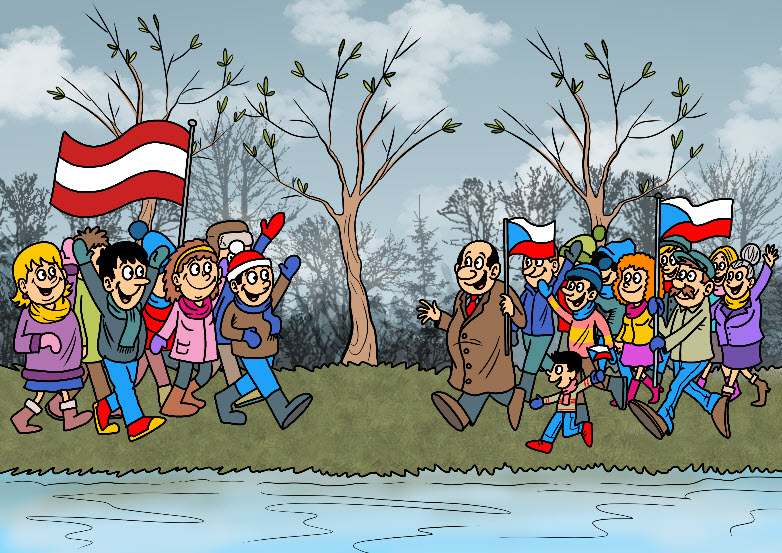December 30, 1989 was a particularly joyful day for inhabitants of the two neighbouring towns Moravský Svätý Ján and Hohenau. The artist Jozef Chrena recorded his impressions of the ‘New Year’s March of Freedom’ in his journal. About 15,000 people marched to the Morava, accompanied by ambulances, fire trucks, buses, and a brass band. On the Austrian side of the Morava, they were welcomed by 500 neighbours from Hohenau. Austrian officials docked their boats on the Slovakian side of the river, bringing along tropical fruits as a token of friendship. Their Slovakian neighbours reciprocated with bread and slivovitz. For the first time in decades, neighbours could meet again at the Morava. Many of them could hardly believe it was happening. The banks of the Morava had become an inaccessible place ever since 1951, when the 11th Border Protection Brigade from Bratislava came as a military unit under Prague command and hermetically sealed the state border, with the aid of deadly weapons, and maintained a presence there year after year. But after the first barbed wire was cut farther south along the Hungarian border with Austria in May 1989, thoughts of freedom became vivid in the minds of Slovakians. A good half year later, bolt cutters were brought to the Czechoslovak–Austrian border as well, in order to decommission the Iron Curtain.


